
* Evolution, of course, does not simply happen in an arbitrary fashion: it is driven and focused by selection pressures. One of the major components of evolutionary science is determining the circumstances, the "game strategies", by which this occurs.
* When we observe the adaptations of organisms, we can often see what functions they perform -- which leads to the question of the selection pressures that created them. Biologists have been very energetic in considering evolutionary "game strategies".
In many cases, the game strategy is obvious and unarguable, one of the best-known being the "evolutionary arms race". This was illustrated by the race between toxic newts and toxin-resistant garter snakes discussed earlier, with the "arms race" between the two species driving the emergence of more toxic newts and garter snakes with greater resistance.
For another example, consider gazelles, and the cheetahs that prey on them. A faster gazelle means that slow cheetahs are going to have a hard time making ends meet as predators. That means faster cheetahs survive. Faster cheetahs mean that slower gazelles are likely to end up as lunch -- which means faster gazelles survive. The two species are playing a game of "raising the bid"; gazelles and cheetahs are locked in a "co-evolutionary arms race".
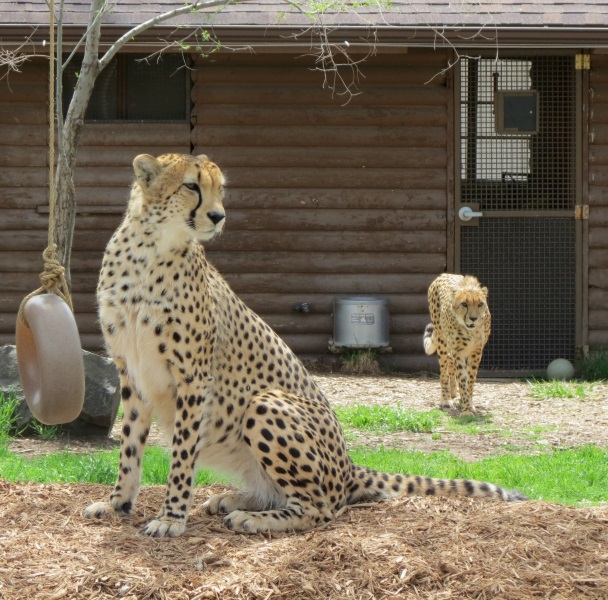
The race can drive evolution at a very rapid rate. It provides an explanation for the 19th-century illusion of "orthogenesis", the idea that organisms will evolve in a particular "direction" on sheer "momentum" -- when in fact they simply being driven in a particular direction by strong external selection pressures. The race only slows down when it starts running into diminishing returns -- for example, if the adaptations of a female cheetah for running begin to pressure her ability to bear a litter of kittens, or if longer legs tend to break more easily.
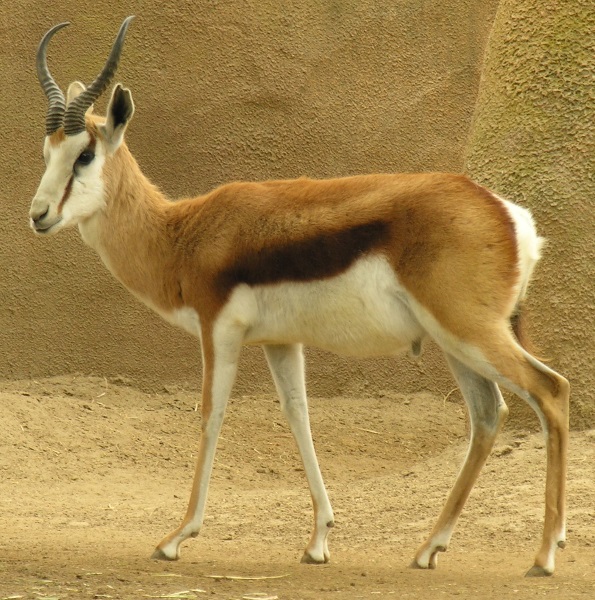
As the two players in the arms race begin to reach their limits, entering a "Red Queen's race" -- like Lewis Carroll's animate chesspiece, running as fast as she could to stay in the same place -- their paths of evolutionary change are likely to go off in unexpected new directions. In particular, once gazelles and cheetahs can't get any faster, they obtain survival advantages other than speed, such as better camouflage and better weaponry. Of course, they were likely also acquiring such adaptations to an extent while they were engaged in the race towards more speed.
One very profitable evolutionary avenue open to them is to become smarter. Once begun down the path of increased intelligence, the evolutionary arms race between smarter predators and smarter prey would continue to drive the evolution of further increased intelligence. Careful analyses of the volumes of brain cases of fossil skulls, compared to estimates of body weight, show that modern mammalian carnivores and herbivores have bigger brains than their ancestors, and so are presumably smarter.
* Sometimes a game strategy is less obvious. Consider the issue of "morning sickness", the inclination of otherwise perfectly fit human females in the first trimester of pregnancy to suffer from nausea and vomiting. It is a puzzling phenomenon -- if it were unusual, it could be dismissed as a health difficulty, but the problem is that it is normal, it is unusual for a woman not to have morning sickness. From an evolutionary perspective, it would seem there was a reason for morning sickness, since if it was merely a useless inconvenience, selection would have got rid of it. That would imply that it was either a side effect of an adaptation that served a useful function, or actually served a useful function in itself.
In the 1990s, a theory was put forward that morning sickness actually serves a useful function. The first trimester of pregnancy is the time when the human fetus is developing rapidly, assembling its basis elements, and during this time it is highly vulnerable to developmental interference from plant toxins and the like. It would then provide a selective advantage if the mother was very touchy about what she eats, avoiding toxins and allowing the fetus to develop normally. Its callous lack of consideration is perfectly compatible with MET, and in case the evolutionary analysis turns something that seems to make no sense into something that makes perfect sense.
More recently, a study performed of pygmy tribes produced an evolutionary model that was very difficult to credibly reject. While the small-statured pygmies of the African jungles are best-known, there are also unrelated jungle pygmy tribes in the Philippines and South America. Why should tribes of people who live in tropical jungle environments tend to be so small?
Careful analysis of statistics on these tribes produced two clear results: first, living in an environment where disease is widespread, few pygmies lived into their late twenties; second, pygmy women had their first children at an unusually young age. Further examination of the data showed that pygmies grow at the same rate as other humans, they just sexually mature at a younger age. The conclusion was almost unavoidable: members of pygmy tribes who sexually matured at a more normal age didn't live long enough to produce children in the same numbers as those members who sexually matured earlier, and so selection gradually eliminated the members who matured at normal ages from the tribal populations.
BACK_TO_TOP* The notion of evolutionary arms races suggests the concept of a ruthless nature, and that vision clearly has plenty of basis in reality. However, arms races can also drive strategies for cooperation. The most obvious scheme along such lines is the herd (or flock or troop or whatever), in which individuals operate as a group to obtain more eyes, ears, and noses to watch out for predators.
The herd also provides a defense in simple terms of numbers, in that a predator necessarily will only attack one side or the other of the herd -- an animal on the perimeter of the herd is partly protected on the interior side of the herd by the potential sacrifice of a herdmate on the other side, while an animal inside the herd has some protection all around. In some cases, the herd allows ganging up on enemies: a leopard might be willing to take on a single full-grown male baboon, but taking on four or five of them is a different matter. Of course, predators can also adopt the same cooperative tactics, the classic example being the wolf pack.
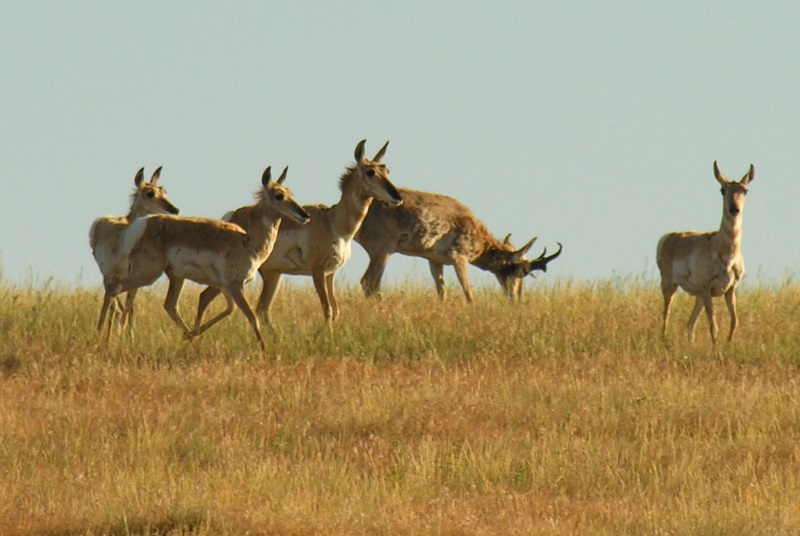
The harem is a common variation on the theme of the herd or pack, with a single male controlling a small herd of females and juveniles. From the point of view of natural selection, the harem concept makes perfect sense: a dominant male obtains reproductive control over a group of females and ensures the propagation of his genes. Such cooperative associations also lead to altruistic behavior, for example mutual grooming in troops of primates to eliminate parasites.
* Where the theme of cooperation gets more interesting is in interspecies cooperation. The most famous scenario is that of cleaner fish and shrimp -- small striped sea creatures that clean parasites not only from the bodies of larger, often predatory fish, but will even clean the mouths and gills of their cooperative hosts. The scheme obviously got started from small fish daring to dash in and sneak a meal of parasites infesting the bigger fish. The bigger fish that were more tolerant of this trickery would have enhanced health, and would reproduce more successfully. At the same time, the cleaners developed distinctive color schemes that allowed them to be recognized as helpers and not as snacks.
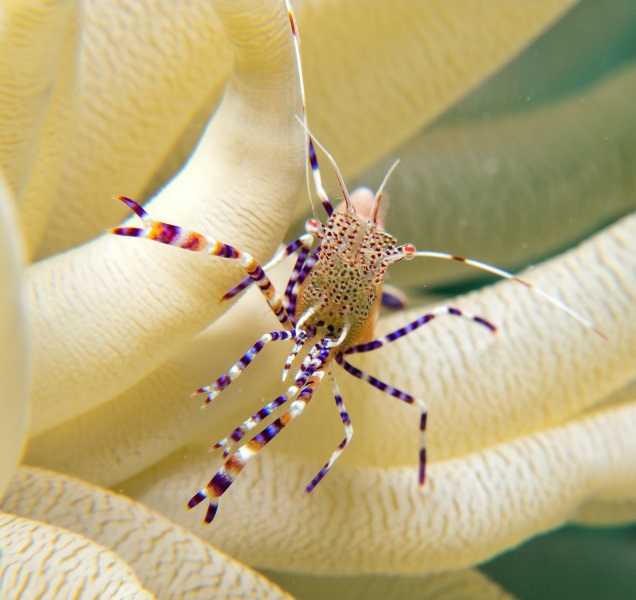
There is a wide range of symbiotic relationships between species, for example plants that provide nodules, sweet sap, or even convenient living spaces as an encouragement for ants to take up residence, with the ants driving off potential plant-eaters. Where these symbiotic relationships become really spectacular is in the relationship between pollinating plants and their pollinators. The relationship between plant and pollinator can become so tight that a particular plant will focus on a limited range of pollinators, and those pollinators will only tend a limited range of plants. For example, red flowers with a long throat, like those of the trumpet creeper vine, are optimized for pollination by hummingbirds -- the red color specifically attracts hummingbirds, and the long throat means that long-billed pollinators are best suited to access the sugary nectar.

This makes perfect sense under MET as well. Plants that developed mechanisms to attract pollinators would improve the odds of propagation; as more specialized mechanisms to support the relationship between plants and pollinators arose, they would tend to branch off in a number of ways, with one strategy being for a plant to channel access to a limited range of pollinators. This ensures that its pollen won't be wasted on unrelated plant species, and the pollinators obtain a "reserved" source of food not available to competitors.
This sort of specialization can be taken to an extreme -- one example being the "meganosed fly" of Southern Africa, which has a proboscis five times as long as its body, optimized for taking nectar from plants with very deep throats. There is a definite penalty in such specialization, however, since it means the fly is dependent on the existence of a sufficient population of such deep-throated plants to keep it in business, with the related problem that the fly and the plants are dependent on each other to the extent that if one dies out, so does the other. Extreme specialization tends to make organisms more vulnerable to extinction; most pollinators service a range or "guild" of plants, helping to ensure they have an adequate food supply.
There is an example of a dedicated pollination arrangement in the form of the "fig wasps" that pollinate fig trees. Fig fruits are essentially a cluster of flowers turned inward into the fruit; fig wasps are born from eggs laid in some of the flowers, with a female inseminated by a male, to then depart from a hole in the fruit to fly to another fig tree, enter the fruit, and then lay eggs in the flowers. Fig trees have mechanisms to prevent the female wasp from laying in all the flowers -- for example, some have two lengths of flowers, a "short" flower where the wasp can lay and a "long" flower where she cannot. The wasps are highly specialized, with a particular species of wasp linked to a specific species of fig tree, almost making the wasp a "reproductive organ" of the fig tree. Incidentally, the fig fruits also support a fair ecology of other organisms -- usually parasites, including larvae of beetles, flies, moths, parasitic wasps, as well as worms and mites.
* Creationists have suggested that such tight symbiotic relationships are inexplicable under MET, along the lines of the challenge of the eye or sea dragons but worse; that there was no way such arrangements could have been created by accident and incrementally. Richard Dawkins once got a letter from a reader who said he had become convinced MET was wrong after watching a nature show on TV that showed plants with "dummy" female wasps to attract pollinating male wasps. The reader insisted this couldn't happen under MET, because the scheme wouldn't work unless the "dummy" female wasp was perfectly convincing.
The letter was almost too easy for Dawkins, since his formal background was as an animal behaviorist. He knew perfectly well from a wide range of experiments by his colleagues that insects are almost completely "hardwired" in their behavior, and trick themselves very easily. As he pointed out, a wasp is about as intelligent as a washing machine -- okay, maybe a high-end washing machine, maybe a bit smarter, but they're still not in different leagues. Could male wasps have been tricked on occasion by plants whose flowers had some vague cues that by accident matched the cues of female wasps? Sure, why not? And once that happened, the natural selection treadmill got going, with plants in the population featuring flowers with more resemblance to a female wasp than others gaining the edge in spreading pollen. The plants gradually evolved from fooling some of the wasps some of the time, to fooling most of the wasps most of the time.
Similar criticisms that such symbiotic relationships require simultaneous lucky mutations on the parts of both partners are mistaken as well. A plant acquires an incremental adaptation to improve the efficiency of the symbiosis, which means more plants and more pollinators. A pollinator may then acquire a complementary incremental adaptation to improve the efficiency of the symbiosis, once resulting in more plants and more pollinators.
Just as with an "arms race", both sides are playing the game of "raise the bid", but in this case they are competing towards mutually beneficial ends. This actually leads to a "Red King's race", with the two sides on a selection treadmill to work more closely together -- and to ensure that there's no cheating on the relationship. In a sense, the two sides end up tailoring the designs of each other.
The idea that the symbiotic relationships between flowers and pollinators are a challenge to MET doesn't stand up to inspection. Not only is it possible to envision game strategies by which such partnerships could have arisen, there is also the fact that there are so many different types of pollinators: bees, wasps, moths, butterflies, beetles, hummingbirds, lorikeets, bats, and even the Australian honey possum -- the only nonflying mammal to take up the trade.
The common nature and diversity of such partnerships suggest opportunism and improvisation, with entirely different lineages of animals acquiring adaptations and getting their own piece of the action. The geographic distributions of pollinators suggests an evolutionary origin as well: why are hummingbirds only found in the New World, why are lorikeets only found in the Asia-Pacific region? And in the case of the lorikeets, the idea that they are straightforward adaptive derivatives of the parrot family is hard to avoid.
Pollinators, incidentally, also again demonstrate the fact that the boundary between artificial selection and natural selection is fuzzy. Pollinators like hummingbirds and lorikeets are picking and choosing among members of the flowering plant populations they service, with their pick biased towards plants that provide the most nectar and the most visually attractive flowers. Since those plants get incrementally preferred treatment, they're the ones that end up in the front of the queue for propagation. In other words, the pollinators are "selectively breeding" their target plants. Of course, the target plants are pruning the pollinators in return, providing the most benefit to those that are best adapted to do the job.
BACK_TO_TOP* It is hard to see that there is anything fundamentally more inexplicable about the co-evolution of cooperative species than there is about the co-evolution of antagonistic species. For example, we have acquired impressive elaborations to defend us from pathogens, while pathogens have developed some very sneaky ways to get past our defenses.
The protozoan parasite known as Plasmodium that causes malaria is a particular case of elaboration, with different generations of the parasite taking on four different forms to deal with survival in its mosquito host or in a mammal host. The form that lives in mammal red blood cells has the ability to heavily restructure the cell to provide for the parasite, and prevent the body from destroying the cell. The form that lives in the salivary glands of mosquitoes suppresses a mosquito's appetite until the parasites mature and are ready to move onto a mammal host; once they're ready, they make the mosquito ravenously hungry, and then suppress the chemicals in the mosquito's saliva that slow down blood clotting in a mammal target, giving the parasites more opportunity to infect the mammal.
Some elaborations of parasites are even more surprising. One species of parasitic wasp that lays eggs on tobacco hornworm caterpillars -- which then hatch to devour the caterpillar alive -- actually injects viruses derived from the wasp's own genome that temporarily disable the caterpillar's immune system, allowing the wasp larvae to mature. Another species of parasitic wasp that attacks the cabbage looper moth caterpillar only lays two eggs, one male and one female, with the eggs cloning into sets of larvae that grow into two forms: "soldiers" that attack other intruders, and "reproductives" that grow up into wasps. After the reproductives mature and take flight, the expendable soldiers die along with the caterpillar host. Yet another species of parasitic wasp even alters the behavior of the caterpillar to protect the cocoons produced by the wasp larvae.
From the point of view of evolution, both cooperation and antagonism are working strategies -- and the dividing line between the strategies of cooperation and antagonism is not rigid: there are small fish that impersonate cleaner fish, allowing them to sneak little bites out of unsuspecting host fish, exploiting the strategy of cooperation to antagonistic ends. Cheating is common (if necessarily not close to the norm) in the pollination game, with plants that trick pollinators into doing the work while providing them with no benefit, and animal species that raid plants for nectar or other rewards, while bypassing the pollination mechanisms.
Interspecies cooperation is also very common, no more unexpected than interspecies antagonism. There are particularly significant and widespread examples of symbiosis at the level of microorganisms. The examples of the eukaryotic cell, with its now-obvious origins as a symbiotic assembly of microorganisms, and the lichens, cooperatives of fungi and algae, have already been mentioned. There is also the case of the nitrogen-fixing bacterium Rhizobium, which as mentioned previously lives in nodules on the roots of plants such as peas, being given a home while it converts atmospheric nitrogen into compounds required by its plant host.
A particularly intriguing example of symbiosis at the level of the microorganism is our intestinal flora, the "endosymbionts" that live inside our bodies, some of which we absolutely need to stay healthy -- if we were to kill off all the microorganisms that inhabit our guts, we'd be dead in a month. Herbivores are often dependent on their intestinal flora, with the endosymbionts digesting the cellulose in grass or leaves to produce by-products that the host can then digest itself. Termites similarly carry gut microorganisms to help digest the cellulose in wood. The microorganisms evolve faster than the hosts, and so the hosts may not end up acquiring the digestive machinery themselves.
Hosts are not always entirely dependent on them; most, possibly all, termites can produce their own "cellulases" -- cellulose-digesting enzymes -- to complement the efforts of their endosymbiotic microorganisms done. Wood is likely the hardest thing in the world that's conceivably edible to actually eat, and termites need all the help they can get to eat it. Research also suggests that caterpillars, which are major herbivores, don't have any intestinal flora at all, though that issue is still under discussion.
Incidentally, in the case of the protozoan named Mixotricha paradoxa in the gut of the Australian Darwin's termite, the protozoan itself is a marvel of evolutionary improvisation. It has a symbiotic relationship with spiral-shaped "spirochete" bacteria that dock in conveniently accommodating recesses on its surface and, waving about, provide propulsion, and it also has endosymbiotic bacteria that seem to be helping it with the job of digesting wood. In fact, this "patchwork protozoan" has a total of five different species of bacterial symbiotes, suggesting the biological equivalent of a developing-world jitney bus, thrown together from pieces of different vehicles, with riders hanging to the top and sides.
* An interesting question raised by creationists is why humans haven't obtained endosymbiotic bacteria to help them digest grass. Surely this would provide a significant selective advantage, so why hasn't it happened? The first half of the answer to this question is that, as far as evolution is concerned, nothing is specifically fated to happen, and we just didn't draw that ticket in the evolutionary lottery.
The second and more interesting half of the answer is that drawing that ticket, becoming a herbivore, is not as simple as just obtaining intestinal bacteria that can digest cellulose. A herbivore needs a mouthful of flat, grinding teeth to pulp leaves and grass, and an expanded digestive tract to cram full of plant matter for the bacteria to digest. Even then, grass and leaves are a low-value food source; a herbivore spends a large proportion of its time eating and digesting. Elephants, lacking the elaborate digestive system of, say, cows, actually digest only about half the vegetable matter they eat, so they have to spend a lot of time eating.
Without the specialized teeth and digestive tract, the herbivore might well end up spending more energy trying to stay fed than could be obtained from the food. In other words, being a herbivore is a way of life, and not something that could be picked up from a mutation or two in intestinal flora. Herbivores are adapted and committed to that approach to staying fed, to the general exclusion of alternatives. Claiming to find a fault with MET simply because humans can't eat grass is on the order of finding fault because they can't fly, or don't have a venomous bite.
The early hominin Paranthropus appears to have been more adapted to a vegetarian diet than any other known ape, featuring a mouthful of flat grinding teeth; what adaptations its digestive tract possessed of course remains unknown. The Paranthropus line was an evolutionary dead end, hinting that its vegetarian lifestyle proved wanting in terms of long-term survival.
There are living primates, such as colobus monkeys, that are herbivores, subsisting on leaves, and they have the adaptations to support that lifestyle. They spend roughly three hours a day feeding and seven hours a day just resting, digesting the leaves. Could ancestral leaf-eating monkeys along the lines of the colobus monkeys have ever evolved to human levels of intelligence? There's no way to prove they couldn't, but there are good reasons to see it as a bad bet. An existence of stuffing oneself with leaves and then sitting around waiting to digest them seems unlikely to be one that drives a high degree of intelligence. Furthermore, a big brain requires a lot of energy, and a diet of leaves is a poor way to support it.
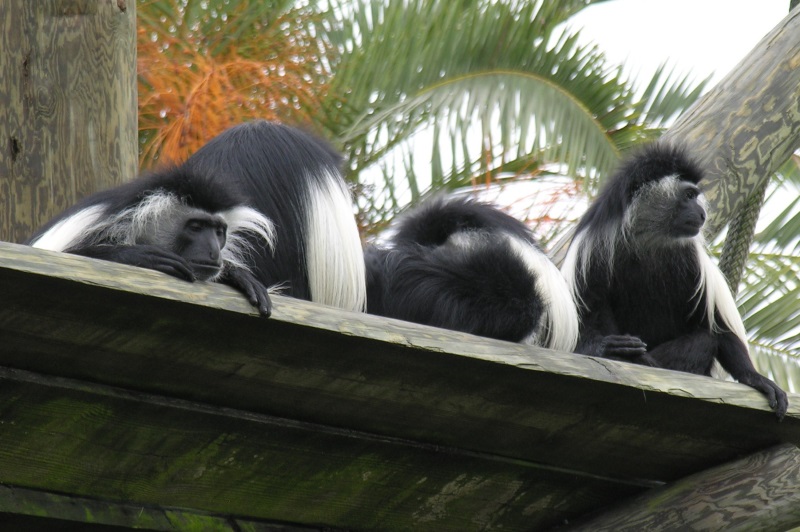
Actually, humans have an unusually diverse diet among animals, and they also do have bacterial symbionts to help them digest plant foods. The human genome lacks most of the genes for enzymes that can break down complex carbohydrates often found in plant foods we eat. However, we are host to the bacterium Bacteroides thetaiotaomicron -- which has genes coding for more than 260 enzymes that digest plant matter, breaking it down into glucose and other small, easily digested sugars. Why can't it handle grass? Because, as explained, the human host is simply not adapted by structure or habit to eat a lowgrade food like grass.
It should be pointed out that analysis of the giant panda's digestive processes show that it is a very inefficient herbivore, able to digest maybe a sixth of the plant matter it eats. Its microbiome doesn't even seem to have much in the way of microorganisms to help with the job, the microbiome much more resembling that of a regular predator than a herbivore. The panda was not fated to get any such helpful microorganisms -- which leaves biologists with the tempting idea of introducing them into the panda gut, and seeing what happens.
* We tend to think of most microorganisms as parasites, and indeed they very often are, so it's a bit surprising to find they can be helpful. Actually, it's a perfectly straightforward strategy. A parasite that injures or kills its host is engaged in a "cut and run" strategy -- which is perfectly workable, but it has a disadvantage in eliminating the parasite's gravy train and requiring the parasite to find another. One of Gary Larson's FAR SIDE cartoons of the 1990s illustrated this neatly, featuring a flea carrying a placard to warn his brethren: THE END OF THE DOG IS NEAR.
Killing off a host isn't such a problem if the parasite can easily find a new one -- but if it can't, the parasite has an evolutionary incentive to come to an accommodation with its host, or even improve the host's chances of survival. The host similarly has an evolutionary incentive to make things easier for a symbiotic microorganism, calling off the dogs of the immune system and even providing accommodations to make the symbiote's life easier. Unfortunately, while there is a tendency for parasites to become kindlier and gentler to their hosts, the "cut and run" strategy is still a workable option in the evolutionary lottery as well, as demonstrated by intestinal flora that occasionally turn lethal.
The two approaches remain in tension with each other. Symbiosis becomes more obviously evolutionary in appearance when it is realized that symbiotic "happy marriages" can go disastrously bad on a mutational whim. It seems even more evolutionary when it is realized there are intermediate cases. For example, there are tapeworms that infect mice that produce analogs of mouse growth hormones to make their mouse hosts grow. Is this a benefit for the mice? Maybe, but it seems more reminiscent of a technique for fattening up livestock. As far as both symbiotes and parasites are concerned, what they do is strictly to promote their own propagation, there's no payoff for them in doing anything else. If it helps the host, fine, if not -- that's just too bad for the host.
* The entire argument of Intelligent Design on the basis of the elaboration of symbiotes or parasites is on shaky ground. Even biology can read too much into the specializations of organisms. Organisms do not really demonstrate the kind of entirely optimized specialization we see in machines. It is true that the red flowers of the trumpet creeper vine, with their deep throats, are best suited for pollination by hummingbirds -- but it's nothing unusual to see honeybees crawling over trumpet creeper flowers. Parasites can have highly specific adaptations to allow them to not merely target specific hosts but even specific organs in a host -- but it's nothing unusual for parasites to "jump" to new hosts. They may not be as well adapted to a new host, but they may still get a foothold in that host, and then over time become more adapted to it.
BACK_TO_TOP* Sometimes evolution seems to go off in bizarre directions. The most famous example is the peacock, with its elaborate set of tailfeathers. Everybody knows that it's to attract peahens, but from a strictly functional point of view it's absurd -- a bit reminiscent of a woman who has been made up with an elaborate coiffure, which can look very nice, but is a real pain to keep that way. Incidentally, the peacock's fan technically isn't really a tail, the long feathers being produced from the bird's back, and nitpicky sources prefer to call it a "train", like the train of a bride's gown.
The peacock's tail gave Darwin the shudders, trying to wonder how natural selection might account for it. In his plodding and thorough way, he came up with the notion of sexual selection, that it occurred because peahens had a preference for peacocks with larger tails. The idea was supported by the fact that only one gender had the ornaments, peahens being generally unadorned creatures; sex clearly had something to do with it. He elaborated on sexual selection in great detail, but his scientific successors all but abandoned the idea.
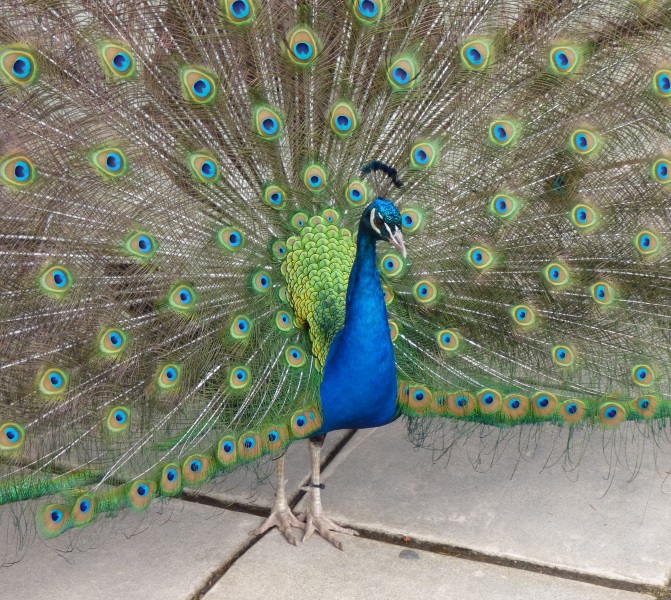
To be sure, obviously sexual selection is at work in species where the males are equipped to fight it out for females -- the antlers of deer and the huge jaws of stag beetles are obvious tools for that job. However, the tail of the peacock is essentially just to impress females, and the principle of "female choice" seemed too arbitrary. Why did peahens like the elaborate tails? Darwin could only say: "Just because."
The only problem was that nobody else could come up with explanations that were even as good. Alfred Russel Wallace claimed that all ornaments such as the peacock's tail were actually a sort of camouflage -- a notion which certainly did not catch on, and later Wallace decided, much more sensibly, that they demonstrated the health of the animal to prospective mates. Julian Huxley thought they were to intimidate other males. Some thought they were flags to tell females they were breeding with the right species -- though why females of other species didn't need such spectacular recognition flags was unclear. Some thought they were warnings to predators, like the colors of nasty-tasting butterflies -- though peacocks were hardly inedible.
Ronald Fisher finally revisited sexual selection by female choice and put it on a stronger basis. In a simplified fashion, Fisher's thinking not always being easy to follow, he observed that, with the exception of sex chromosomes, males and females of a species shared the same genes. That would mean that if females were attracted to males with the longest tails, their progeny would include genes for both longer tails and attraction to longer tails, with the first being expressed in males and the second being expressed in females.
Fisher pointed out, in mathematical terms, that this synergy between male ornaments and female desire created a positive feedback loop, or "cascade" process. Peahens were attracted to proto-peacocks that had long tails; these cocks bred with hens that liked long tails. Cycle through this process thousands of times and it might simply go exponentially out of control, the tail of the peacock growing very rapidly over generations until it became enough of a liability that it balanced out his enhanced ability to attract hens and sire chicks. Fisher wasn't so clear on how the cycle got started, speculating along the line suggested by Wallace that peahens obtained a selective advantage by being attracted to healthy males with long tails.
Incidentally, in some species where the male is gaudily decorated, such as mandarin ducks, the coloration only lasts as long as the breeding season. Once sex isn't the issue of the day, the drake loses his bright plumage and ends up being hard to distinguish from the drab hen. This is another thing that's easy to explain in under MET, since once the drake is no longer in pursuit of hens, the bright plumage is a liability, making him more vulnerable to predators.
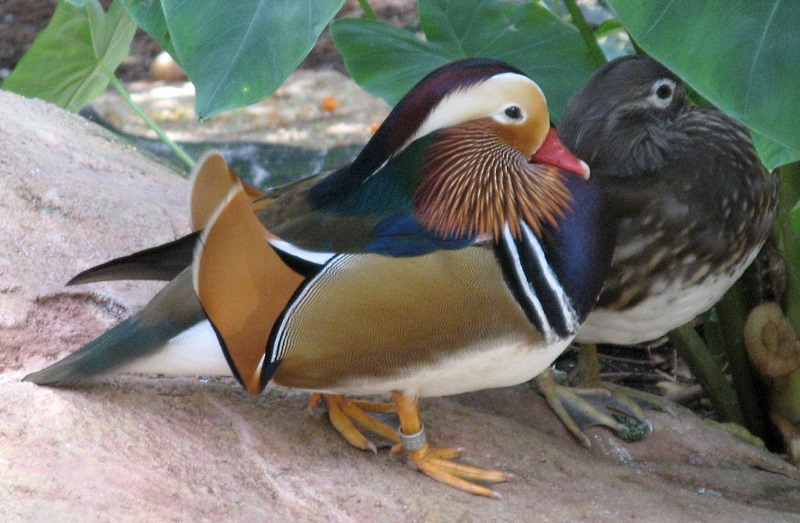
Another evolutionary puzzle is the human brain, which is huge relative to those of other animals, on the basis of ratio to body weight. How did humans get such big brains? There are many ideas. Some researchers have suggested that maybe the big human brain is a product of sexual selection. One reason for this belief is that human brain size evolved at an extraordinary rate that is characteristic of the tight feedback of sexual selection. By this notion, it appears that female prehumans didn't generally "like them big and stupid."
On a related note, a human male's penis is on the average four times longer than that of a full-grown gorilla's. Is there any particular advantage from a simple efficiency point of view in the much bigger size -- does size really matter? Or is it just an arbitrary trait of our species, driven possibly by sexual selection and positive feedback? It certainly is a bit comforting for us human males to know that in comparison to our body weight, our penises outmatch those of males of the species near to us. But this line of discussion need not be pursued further here.
* An Israeli biologist, Amotz Zahavi (1928:2017), later came up with an interesting observation on the peacock's tail and other elaborate sexual ornaments that became known as the "handicap principle", in which Zahavi suggested that there wasn't any element of whim in it at all. The idea is that the peacock's excess of ornaments is not mere useless flash, it's a billboard that tells the peahen the cock is so healthy and promising as a prospective father of the hen's chicks that he can afford to carry around such excess baggage, and has survived in spite of it.
It was long recognized that the peacock's tail was a form of sexual advertising, but the handicap principle gave the advertising a specific message. The idea is along the lines of a wealthy man about town who lights cigarettes with $100 bills to impress the girls: "I'm so wealthy I can afford to simply burn up money." The important feature of the peacock's tail is that it's an honest message, since it would be very difficult for an unhealthy peacock to support an impressive tail. If there were some way to cheat on the scheme, with unhealthy males performing false advertising, it would not provide as great a selective advantage and would be winnowed out by natural selection; fly-by-night operations are not in business over the long term.
The handicap principle is interesting but has been somewhat controversial, its critics suggesting that it sounds a bit -- or maybe more than a bit -- like yet another "just so" story. Dawkins said that the logical conclusion of the handicap principle would be the evolution of males with one leg and one eye. Zahavi promptly shot back: "Some of our best generals [in Israel] have only one eye!" (For what it's worth, it might be noted that one-eyed Israeli General Moshe Dayan was a notorious and highly successful skirt-chaser.)
However, as Dawkins conceded, the more the idea is considered, the more interesting it becomes. Population genetics models do provide some support for it and it has caught on, at least to an extent, being reinforced by examples from nature such as "stotting". This is a behavior among certain gazelles in which they perform energetic bounds up into the air when they spot a predator, such as a lion. The behavior seemed bizarre, almost as if daring the predator to attack, far more activity than would be needed to provide a warning to the herd and a waste of effort that might be better spent in escaping from the predator. The reality is that predators sensibly prefer to take on older or weaker prey. The stotting may be an honest advertisement to the predator: I'm so healthy that I can afford to bound up in the air -- you won't catch me, don't bother, try somebody else.
The concept of "honest advertisement" also helps solve another dilemma of sexual selection. If peahens only mate with the showiest males, the population of peafowl gradually converges to a genetic uniformity that will be a liability over the long run. However, the "parasitic Red Queen's race" now enters the picture: without genetic diversity, pathogens soon increase their stranglehold on the species, and peacocks with the more "traditional" genomes increasingly find themselves sickly and no longer able to provide resources to maintain their flashy tails. That gives the edge to peacocks with less "traditional" genomes: the last shall be first, the first shall be last.
* There's yet another approach to the roots of sexual selection. It is clear that adaptations often have indirect side effects -- in fact, given the undirected nature of evolution, side effects are to be expected. In human design, it takes considerable effort to minimize side effects; in contrast, evolution only factors in side effects if they have some impact on the ability of an organism to survive and reproduce.
What if, so this line of thinking goes, the hens were initially attracted to features of males just because those features were reminiscent of something else that the hens had a sensible reason to care about? Suppose female birds were inclined to notice red because that was the color of ripe berries -- they might well then find males with red coloration more intriguing than those without, kicking off the sexual selection treadmill for ever redder males, ultimately resulting in the cardinal.
That sounds like a difficult notion to test, but two researchers once dummied up males of the Australian grassfinch with artificial head crests, like those of the cockatoo, of various colors. Females had no particular preference for males with the artificial crests -- except if the crest was white, and then the males scored very heavily, to a level that ruled out a statistical fluke. Why precisely the females liked the white crest is unclear, but they had certainly never seen males with them before, and whatever instinct that made them look good was something not associated with past breeding activities.
* As this discussion shows, the peacock's tail is perfectly explicable under MET. The hoops through which organisms may have to jump to just reproduce may seem surprising, but the answer to that is: just reproduce? In evolution, reproduction is the goal of the game, everything else is just in support of that goal. The competition to reproduce can be very intense, and can drive significant adaptations.
Male field crickets will sing away loudly at night, and the loudest among them will get mates. However, they will also attract parasitic flies that lay eggs in them, the eggs hatching into larva that eat the crickets alive. Where parasitic flies are common, cricket singing fades out; when the flies are suppressed, the crickets will soon evolve back to singing as loud as they can. Indeed, crickets imported to Hawaii from Australia, to then be confronted with parasitic flies imported from North America, actually evolved variants that don't sing at all.
Alas, the non-singing crickets can, it appears, only reproduce by associating with singing crickets, or in other words they're parasites of a sort themselves, and it's hard to see that they really have much of a future. It might be nice to have some form of sexual display that doesn't attract unwanted attention, but that's not how evolution works: the crickets are trapped, and end up being forced to accept the bad with the good.
BACK_TO_TOP